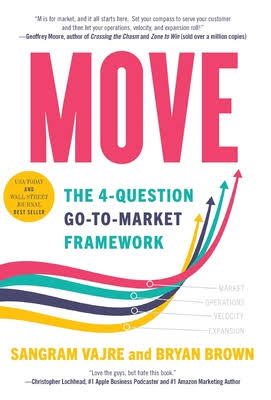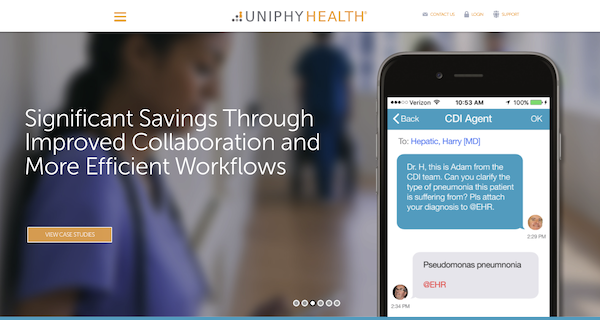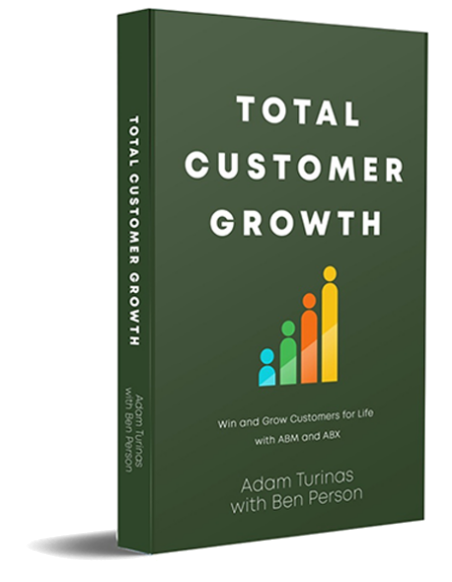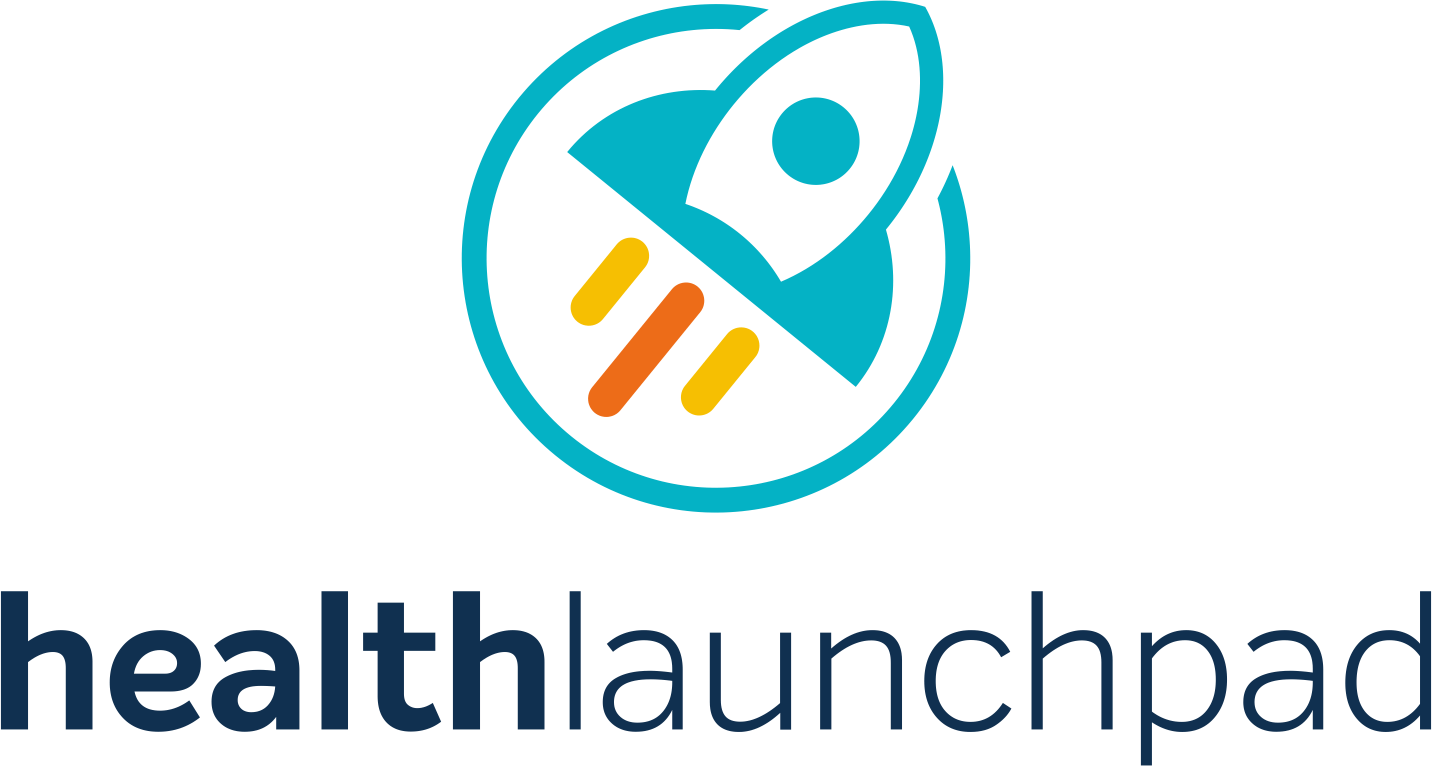 In Sangram Vraje and Bryan Brown’s book Move the 4-Question Go-to-Market Framework, they advocate that we should all be more focused on retention than new customer acquisition. If you take this seriously, make Net Revenue Retention (NRR) a high-priority KPI. In this post, I will explain why NNR is a big deal, how to calculate it, and a personal story proving the point.
In Sangram Vraje and Bryan Brown’s book Move the 4-Question Go-to-Market Framework, they advocate that we should all be more focused on retention than new customer acquisition. If you take this seriously, make Net Revenue Retention (NRR) a high-priority KPI. In this post, I will explain why NNR is a big deal, how to calculate it, and a personal story proving the point.
“Retention Is the New Acquisition”
The first thing we all learn in marketing is that it’s easier to win more business from current customers than from new customers. However, most marketing resources are focused on winning new customers.
In their book, Sangram Vraje and Bryan Brown argue that sales and marketers should focus more on Customer Life Time Value (CLV) over acquisition. As budgets tighten, retention will be prioritized over acquisition.
This is common sense, as a lower revenue churn rate results in high recurring revenue. Moreover, it’s 5X more expensive to acquire new customers than to retain one.
Measuring this is key, and there are two SaaS metrics that you should track: Gross Revenue Retention (GRR) and Net Revenue Retention (NRR). For a SaaS firm net revenue retention (nrr) could be as important as monthly recurring revenue (mrr).
Gross vs Net Revenue Retention
“Hey, Chat GPT, what are Gross Revenue Retention and Net Revenue Retention and how do you calculate net revenue retention?”
Gross Revenue Retention
Gross Revenue Retention measures the percentage of revenue retained from existing customers over a specific period, usually a year, excluding any upsell, cross-sell, or expansion revenue. This metric can be calculated using the following formula:

In other words, it looks at the revenue from a cohort of customers at the start of a period and compares it with the same cohort at the end of the period. The focus is solely on retention, so new customers and additional revenue from existing customers are not part of this calculation.
For example, if you started the year with $100,000 in revenue from a particular cohort of customers, and by the end of the year, that revenue had dropped to $90,000 (ignoring any new customers or additional purchases), your Gross Revenue Retention rate would be 90%.
Net Revenue Retention
Net Revenue Retention takes into account not just the retained revenue but also the additional revenue generated from existing customers through upsell, cross-sell, or expansion. It is calculated using the following net revenue retention formula:

For example, if you start with $100,000 in revenue from a set cohort of customers, lose $10,000 due to churn but gain $20,000 in upsell, the Net Revenue Retention would be:

A Net Revenue Retention rate of over 100% is considered excellent, as it indicates that the business is not only retaining its existing customer base but also expanding the value of those relationships.
In summary:
- Gross Revenue Retention focuses purely on how much of the original revenue from existing customers is retained, ignoring upsell or expansion.
- Net Revenue Retention incorporates additional revenue from existing customers, such as upsell or cross-sell, in addition to the retained revenue.
Both metrics are critical for understanding the long-term viability and growth potential of a recurring revenue business.
Thanks, ChatGPT! You’re the best!
Net Revenue Retention Was Critical In Selling My Company

How We Made Money
The key thing from the definition above is that NRR considers upsell and cross-sell. This proved very important when we sold the SaaS business I founded.
As I recounted in my personal story (bottom of our About page), in 2012 a physician and I started a health tech firm that helped clinicians communicate better. Originally called Practice Unite and later renamed Uniphy Health, our mobile and desktop apps provided clinicians with a HIPAA-compliant messaging system when we absorbed another firm.
In addition, the application integrated with the EMR and other systems and provided clinicians with many useful features like their call schedules.
We made money in three ways:
- A base annual recurring license fee based on the number of users.
- An increased annual license fee by adding features such as call schedules or critical lab notifications.
- Multiple 1-off professional services fees for integrations, customizations, etc.
Putting the Company Up for Sale
In 2018, the board decided it was time to sell the company. This was especially challenging. We had been operating in a crowded market, and many competitors were also for sale. It sucked, but we were selling in a buyers’ market with many sellers vying for attention.
While we had a good growth rate, a great product, and a solid customer list, we were still small. Our investment bankers solicited around eighty companies, and fifteen expressed interest. Four made initial offers. Ultimately, it came down to two serious buyers: One all-cash deal and the other a mostly stock deal. The latter was unacceptable to the board, so we negotiated terms with the cash buyer.
Why Net Revenue Retention Swung the Deal
Our growth rate over the prior five years was 57% annually (CAGR). That would be astounding for a large mature company, but it was not particularly impressive for a small investor-backed software company, especially as it had been inconsistent. In addition, in the last year, we struggled to add more than a couple of new logos before selling the company.
They beat us up pretty badly on this.
What swung the deal was that our growth within existing accounts had been stellar.
90% of our customers expanded their platform use, adding users and/or functionality.
The annual license fee increased across almost every customer.
This diagram shows how this translated into revenue across three customers:

Our Net Revenue Retention Rate was 138% in 2018
It had been 110-120% in prior years.
This was critical for the buyer. Their primary interest was in growth from current customers rather than the potential to sell the solution to new customers. Moreover, it helped that we had very low customer churn. We only lost one customer in seven years. I am probably proudest that we had close to 100% customer retention.
Customer success was critical to this. We had invested in having more customer success managers than salespeople. Our clients told us our customer service was better than other vendors.
A nice postscript is that more than four years later, the Uniphy Health product is still being used by many of the customers we transitioned to the buyer. Given that it is typical to re-evaluate software every five years, it’s gratifying to know that the customers continue to get value out of what we sold them in many cases seven or eight years ago.
Customer Retention Strategies
Helping our customers retain and grow their customers is a real passion of mine. In our book Total Customer Growth, we dedicated an entire section to growing existing customers and how to turn your best customers into champions.
If you want to learn more about how we can help companies like yours retain and grow customers, let’s book a growth session.
Alternatively:
- Check out the book. You can buy it on Amazon.
- Check out more posts like this in the Healthtech MarketingLearning Center. It is chock-full of articles (like this one on ABM intent data), use cases, how-to’s, and ideas to get you started on your ABM journey.
- Follow me or connect with me on LinkedIn. I publish videos and articles on ABM and healthtech marketing.
